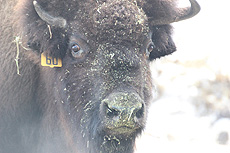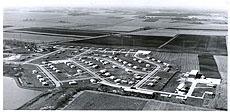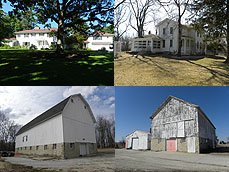|
Monday, March 17
- Breakfast: pancake sandwich
- Breakfast: sausage, egg and cheese croissant
- Philly chicken sandwich
- Smart cuisine: herbed pot roast
- Corned beef and cabbage
- Spicy buffalo chicken wrap
- Szechuan-style green beans with chicken
- Tuscan white bean and kale soup
- Texas-style chili
- Assorted pizza by the slice
Wilson Hall Cafe menu
|
|
Wednesday, March 19
Lunch
- Ham and gruyere crepes
- Cabbage salad
- Caramel macchiato cheesecake
Friday, March 21
Dinner
- Mixed greens with herb vinaigrette
- Fig and chili-glazed pork tenderloin
- Potato cakes
- Sauteed green beans
- Pecan rum cake
Chez Leon menu
Call x3524 to make your reservation.
|
|
There's an app for that
 |
From arcade-style fun to sophisticated simulations, these mobile downloads can supply your physics fix. Image: Sandbox Studio
|
From simulators and reference tools to fun and games, physics-related mobile applications run the gamut. Some of the apps were designed by physicists for use by physicists, while others are intended to inform the general public about physics laws and the field's grandest experiments, or offer an entertaining escape.
Symmetry scoured the app stores and pulled out a few of our favorites. These apps stretch the scale from massive galactic phenomena to subatomic particles and send you on adventures ranging from Ms. Particle Man's fictional pursuit of the Higgs boson to the actual particle pathways that led to its discovery at the Large Hadron Collider.
Capturing the gravity of any situation
App name: GravLens3
Platforms: iPhone, iPad
Cost: Free
Developer: Eli Rykoff
Date launched: Summer 2009
Total downloads: Nearly 9,000
Description: This free educational app allows users to simulate the effect of a large gravitational lens, such as those created by galaxies, using an iPhone or iPad camera and screen.
When Apple's App Store opened up in 2008, Eli Rykoff, then a researcher at the University of California, Santa Barbara, had just purchased a MacBook Pro. "I decided it would be fun to try to write an app," says Rykoff, who works as a research scientist on the Dark Energy Survey and Large Synoptic Survey Telescope projects for the Kavli Institute for Particle Astrophysics and Cosmology at SLAC.
He teamed with another researcher, Phil Marshall, also now at KIPAC, who supplied the math calculations, to build an educational app that quickly simulates gravitational lensing effects such as those observed in space.
In gravitational lensing, an object nearer to the observer, such as a galaxy or galaxy cluster, serves as a lens for a more distant galaxy or other object that is behind it, and the more distant object can be greatly distorted to appear as multiple images, rings or arcs. Lensing can be used to study dark matter, dark energy and the age and size of the universe.
The first version of GravLens took about six months to develop, Rykoff says, and allows users to touch their screen to move a large gravitational lens around a still image or live camera view to watch its effects.
Rykoff has continued to update the app, which has been featured in SLAC events, including a SLAC public lecture by KIPAC cosmologist Debbie Bard. This latest version, GravLens3, was released in November 2013 and allows users to wirelessly broadcast live lensing images to an external projector or screen.
Read about more apps
—Glenn Roberts Jr.
|
You got food on your face
 |
| It's no disgrace, gettin' that hay all over the place. Photo: Lori Limberg, BSS |
|
SuperKamiokande finds that neutrinos change flavour at night
From Physics World, March 13, 2014
More electron neutrinos from the Sun reach the surface of the Earth during the night than during the day, according to an 18-year study by physicists working with the SuperKamiokande neutrino detector in Japan. The finding offers further confirmation of a prediction made nearly 30 years ago that neutrinos travelling through dense matter change flavour at different rates than neutrinos travelling through empty space. The results also suggest that neutrino detectors of the future could be used to study the interior of the planet.
Electrically neutral and interacting only via the weak force, neutrinos are fiendishly hard to detect — indeed, most neutrinos from the Sun travel straight through the Earth without interacting at all. But several exceptionally sensitive detectors around the world have managed to snare these elusive particles, revealing in the process that neutrinos "oscillate" between different types, or "flavours", as they travel. In fact, this unusual behaviour explains the long-standing mystery of why far fewer solar neutrinos are captured by electron-neutrino detectors than expected: the electron neutrinos are simply changing into muon and tau neutrinos on their journey to Earth.
At neutrino energies below about 2 MeV, about half of all electron neutrinos from the Sun change flavour before reaching the Earth. For neutrinos of higher energies, however, a larger fraction change, meaning that fewer electron neutrinos are detected.
Read more
|
|
Fermilab heritage
 |
| Before there was the National Accelerator Laboratory, there was the subdivision of Weston, Ill. This area is now part of the Fermilab site. Photo: Fermilab
|
Ever wondered why farmhouses and barns are part of the landscape at a physics research lab such as Fermilab? Well before there was an energy, intensity or cosmic frontier, there was an agricultural frontier, and before there was a Fermilab, there was a farming community.
Recently, the ESH&Q Section commissioned the development of an Archaeological and Architectural Assessment of Historic Properties within Fermilab. It will provide an overview of historic properties, including archaeological investigations and background research on structures built during the farming days, as well as an architectural assessment of those historic properties with standing buildings and structures.
For Weston, Ill., history changed course on Dec. 16, 1966 when it was announced as the winner of a national competition of states proposing to be the location of the future National Accelerator Laboratory, home to a 200 billion-electronvolt high-energy physics research machine. Then in 1967 the state of Illinois began to acquire the real estate, including the farms of the current Fermilab site and the small subdivision of Weston (see aerial view above), which it then donated to the Atomic Energy Commission for the laboratory. In this process, 56 farm families, in addition to the residents of Weston, were displaced from their homesteads.
At the time, founding Director Robert R. Wilson hired the joint venture group of Daniel, Urbahn, Seelye and Fuller, or DUSAF, to assist with the design of the laboratory. DUSAF produced a document titled Plan for Existing Buildings on the NAL Site near Batavia, Illinois on Aug. 15, 1968, as part of the laboratory master plan; this document has since been referred to as the "Farm Book" (see the Fermilab History and Archives Project page for more information). Architects employed by DUSAF conducted an informal "historic and visual-structural" evaluation of most of the buildings, incorporated findings and retained the numbering system of an earlier July 1967 report by Bryant Lemon titled Preliminary Survey of Existing Structures on Weston Site. These site numbers are still used today and have become a part of each site's identity.
ESH&Q commissioned the architectural assessment because most, if not all, of the 350 buildings and structures (77 farms) present on the parcel when the state of Illinois purchased the individual farms that now make up Fermilab are at least 50 years old, and this is the minimum age for consideration for inclusion in the National Register of Historic Places.
Currently only Site 29 (the director's house), Site 58 (the oldest intact farmstead within Fermilab), the Site 65 barn (banked barn known as "Hawks Barn") and the Site 67 barn are eligible for inclusion on the National Register of Historic Places based upon architectural merit.
—- Teri Dykhuis, NEPA and cultural resources (including historical properties) coordinator
 |
| These sites are eligible for inclusion in the National Register of Historic Places. Top row, from left: Site 29, Site 58. Bottom row, from left: Site 65, Site 67. Photos: Fermilab
|
|
Synopsis: Earth as giant gravitational wave detector
From Physics, March 13, 2014
Gravitational wave (GW) detectors range from meter-wide test masses to kilometer-long laser interferometers. The Earth itself is also a potential GW receiver that outputs its signal in seismic waves. A new analysis of seismograph data constrains the amount of GW radiation in the Universe at frequencies just below 1 hertz (Hz). The derived upper limit, presented in Physical Review Letters, is orders of magnitude lower than the previous bound at these frequencies.
Read more
|
|